After a long day’s RV ride the most exasperating thing would be realizing your towed vehicle battery has discharged. You’re generally left with two options when faced with this situation. First fiddle around with your jumper cable only to realize it’s not long enough. Then ask help from some benevolent person nearby.
Many factors might have played a part in leaving you in this dire situation. Either it is the supplemental braking system or the ignition switch triggering your car’s electrical system. They can both substantially drain the battery. A towed battery charge line can help you get out of this bad situation.
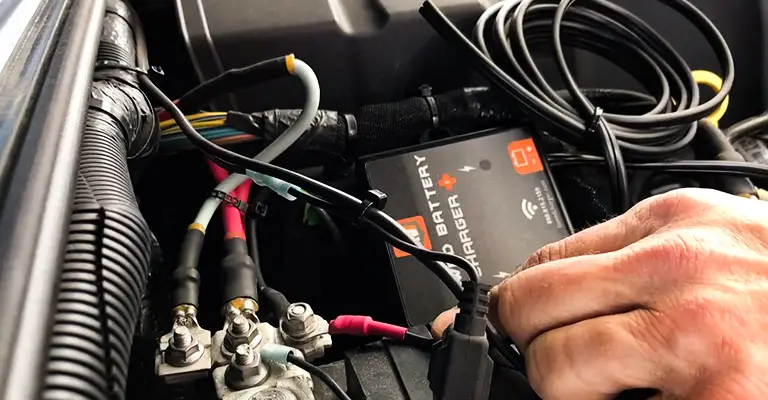
How Does a Towed Car Battery Charge Line Work?
A towed car battery charge line works by establishing a connection with appropriate gauge wire. But it’s not as simple as it sounds. Many factors have to be kept in mind while going about this task. Some light has been shed on them.
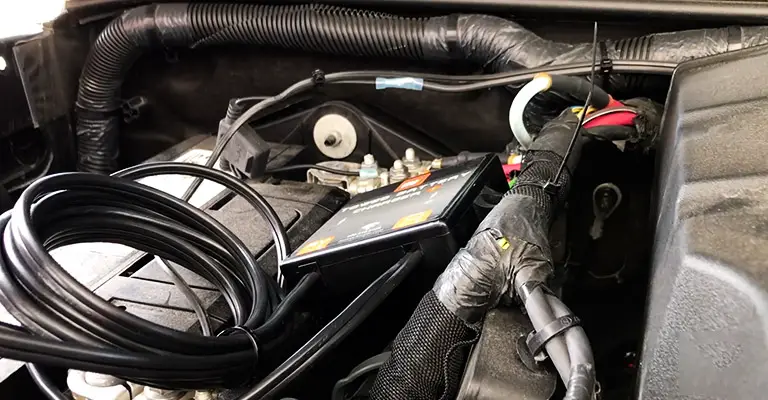
Establishment of a Connection
A 12 gauge standard wire is usually used to connect the motorhomes alternator with the towed vehicle. But if the run is long then a lower gauge is preferred. Fuses are also used at both ends of the wire. They must be appropriate for the 12 gauge wire and the distance. An unfused ground wire is also necessary.
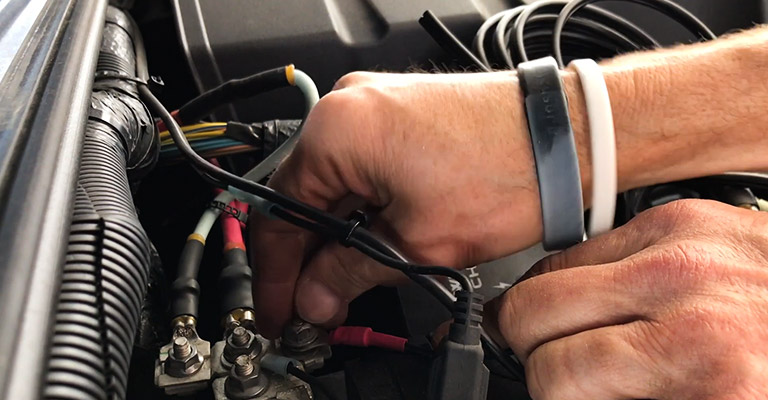
Installation of a Battery Disconnect Switch
To eliminate any possibility of the car battery being discharged a disconnect switch is vital. Normally the charge line can do the trick. But due to several factors such as the difference between battery potential, their charging rate, cleanliness of the connector terminals they do become discharged occasionally.
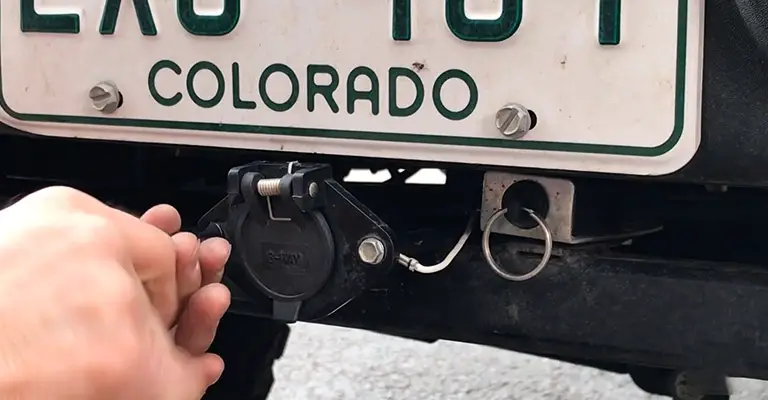
Battery Discharge Prevention
Discharge can be easily prevented simply by taking the car battery out of the equation. This is done with the help of a disconnect switch. This can be installed on either the positive or negative terminals. But it is pivotal to ensure that the charge line is established before disconnecting the car battery.
Blown Fuse
The car battery should be reconnected before the charge line is unhooked. Failure to accomplish this can result in a blown fuse. For the optimal result, it is advised to connect the disconnect switch on this negative terminal.
A Vehicle With a Supplemental Braking System
A towed vehicle that has a supplemental braking system that requires electrical power from the battery can’t utilize this setup. The reason is that they have an electrically operated breakaway protection system. If vehicle separation occurs and the power is cut then the breakaway protection feature would fail to activate.
Installation of a Charging Isolator System
A charging isolator system helps monitor and limit the charge rate and prevent any discharge from the car battery. Some top of the line models is discussed here.
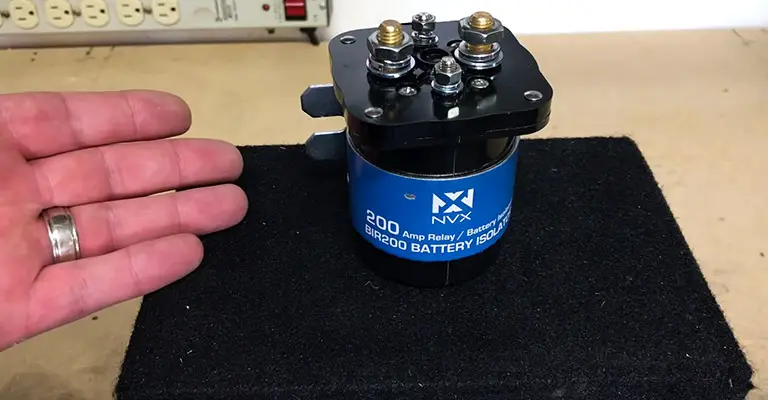
Toad-Charge From LSL
Toad-Charge from LSL is a quite versatile isolator system. It is installed on the charge line at the battery of the towed vehicle. A 15-amp circuit breaker is used for the source end at the coach batteries.
This module has three LEDs that indicate things like power, reverse polarity, and charging. After proper connection, if the engine of the motorhome is supplying more than 13 volts the power light will turn on. A reverse connection on the other hand will result in the reverse polarity light turning on.
The charging light will turn on once the towed vehicle battery is being charged by the processor. All the lights will immediately go out if the motor home engine is shut off and the charge line voltage is below 12.8 volts or so. Alongside this, the processor also disconnects the motor home battery to prevent discharge.
Automatic Battery Disconnect
Another impressive isolator system is the Automatic Battery Disconnect manufactured by Roadmaster Inc. It not only provides a constant charge to the battery but also positive current to towed vehicles. It is optimal for use with vehicles that require the battery cable to be disconnected.
This product is embellished with a marine-grade solenoid that has high amperage. It connects between the positive battery cable on the towed vehicle and the positive battery terminal. The taillight wire in the towed vehicle harness provides electricity from the motorhome to the solenoid. Then to the battery.
The motorhomes headlight switch must be turned on to activate the automatic battery disconnect. This will provide power to the disconnect system. If the harness is disconnected from the motorhome the battery operates normally.
Conclusion
While traveling long distances on the road stopping every once in a while (1 to 2 hours) can leave the battery charged. But to truly ensure a charged battery a proper charge line is pivotal. This charge line functions to keep your car battery charged no matter what.
Also read – 5 Best Topside Creeper Review
Leave a Reply